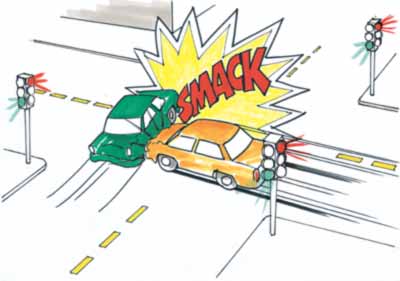You are to answer the following question in class, on your blog on Monday 2/8:
Using examples from at least 3 different amendments and supporting your argument with at least 4 different court cases, what happens when freedoms and protections collide? In your discussion be sure to include at least one example that differentiates freedoms and protections in school vs. freedoms and protections outside of school.
Once again you are to post this answer to your blog, with the title of "Civil Liberties Test"
Feel free to discuss the question with your classmates or leave comments below with questions or suggestions. I will be checking the blog on Sunday afternoon prior to the Super Bowl to answer any questions you may have.
Subscribe to:
Post Comments (Atom)




are we supposed to use 3 amendments and then for each amendment have 4 different court cases that talk about that certain amendment and the rights for each?
ReplyDeletewhat are the length requirments
ReplyDeletecan we publish it right now or should we wait until tomorrow? Because I have an absolutely beautiful work of art on my hands that I'm just dying to share with the rest of the world.
ReplyDelete3 amendments total...4 different court cases total. So you could talk about the 1st, 4th, 5th, and 4 different cases total (2 from 1, 1 from 4 and 1 from 5), etc.
ReplyDeleteNo length requirements.
Matt, wait until tomorrow...proof read it tomorrow in class and post it in class. I am sure it is fantastic!
It’s hard to say exactly what will happen when freedoms and protections collide, but two things that are almost certain are that there will be chaos and there will be a trial. There are a few court cases that prove just that. For instance, in the Gideon Vs. Wainright case, the accussed man was arrested and wasn’t allowed an attorney. During trial he was found guilty, but because the 6th Amendment guarantees the right to an attorney he got let off. In another court case, Miranda Vs. Ariona, a man was arrested and accused. After being arrested, he confessed but later reranted his statement after he was informed of his right to remain silent. The 5th Amendment protects you from self-incrimination so therefore without any further evidence, he was let go. So although he confessed, he had to right to remain silent after and his ‘protection’ of the 5th Amendment defeated his ‘freedom’ to confess. Another case that caught me eye was Thompson Vs. Oklahoma where a 15 year old boy had murdered his brother-in-law for abusing his sister. The prosecutor requested to trial him as an adult and later the 15 year old had been sentenced to a death penalty. However, the 8th and 14th Amendments prevent the execution of someone under the age of 16 in Oklahoma. They later reduced the boys sentence. They had the freedom of prosecuting him as an adult, but his protection from the death penalty had won. However, one factor that plays a big role in the decision between freedom and protection is whether or not you are on school grounds. Being on school grounds and commiting a minor offense, could possibly result in you getting prosecuted like you got a mahjor offense. For instance people have the right to believe in ay type of religion they want, however when at school, it is unexceptable for someone to try and push and persuade people towards their religion. It’s kind of like the racial issue, for that when colleges accept more minorties. In case Backe Vs. UC-Davis he didn’t get admitted to that school and African Americans with lower GPA’s had gotten in. He felt he was discriminated because he was white. The court ended up saying that the system was unconstitutional in that race cannot be the determining factor of whether or not you get admitted into college. When freedoms and protections collide, many thing different things can come of it, but if there is a protection for it, more often than not you will be fine.
ReplyDelete